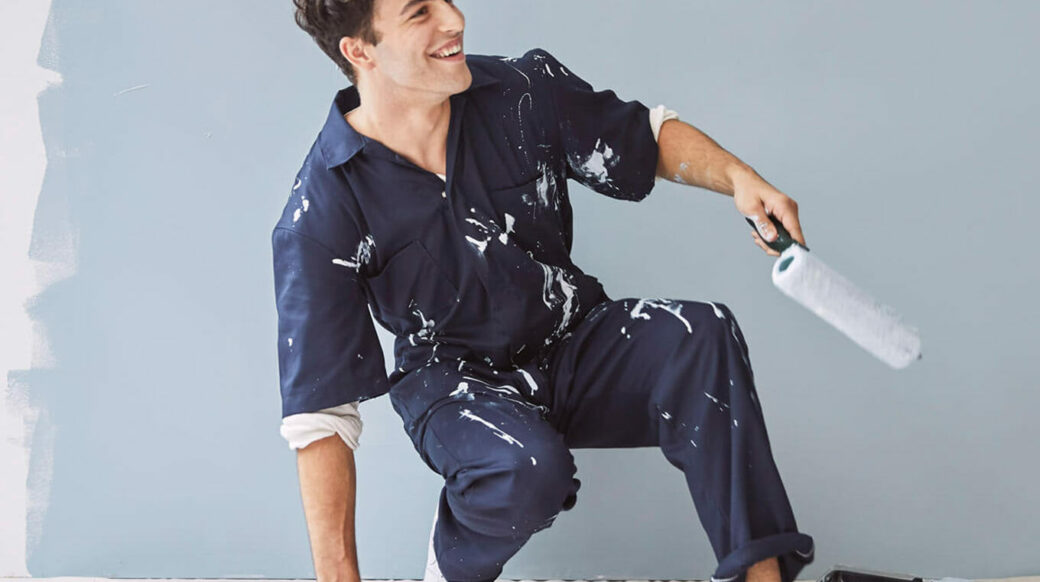What Modern Paint Consumers Want
In 2017, Nicole Gibbons launched Clare, a direct-to-consumer paint brand targeted at digital and design-savvy millennials. Gibbons had previously worked as head of global PR and events for Victoria Secret while also moonlighting as aninterior design blogger. Gibbons eventually turned her passion for design into a career when she opened her own interior design firm,Nicole Gibbons Studio. A few years later, she delivered Clare to the world.
This unique career path produced a core insight that is part PR, part lifestyle branding: successful DTC brands don’t simply cut out the middleman in order to provide products at a lower cost. Instead,in Gibbons words, they “(deliver) an amazing experience that isn’t out there in the market today.“
She expands on this by saying, “It’s really about the amount of value we deliver the customer. It’s the paint, the tools, the design guidance, the ease of selection, everything is delivered to your door.“
While the long-term viability of Clare and other DTC paint brands such as Backdrop is not certain—though venture capitalists seem to be betting on success—there is no doubt that the $155 billion paint industry is ripe for disruption.
So what should legacy paint brands be doing to prepare for the next Clare? How can they prepare their brands for the coming storm of innovation?
Less Options is More
In an interview with Architectural Digest, Nicole Gibbons describes the core challenge consumers face when shopping for paint: "Painting is such an important step in decorating. It should be fun and exciting, but the reality is that it’s a completely overwhelming and frustrating process.“
To solve this, Gibbons simplified Clare's color palette to 55 colors, available in eggshell or semi-gloss. Suddenly, Clare consumers have a much less overwhelming choice to make.
As Gibbons says in that same interview, “Designers all have a curated roster of tried and tested colors we know and love that we use as go-to’s time and time again. That's how I looked at the creation of our color palette—timeless colors you’ll love, without any clutter." Paint brands should consider taking a cue from Clare’s curated selection of colors.
Also, paint brands should consider simplifying their in-store fixtures to make them less overwhelming, less intimidating. Less is almost always more.
What’s In A Paint Name?
Collingwood. Shadow. Mustang. Warmed Cognac.
While there may be a certain romance to most paint brands' naming systems, they don't really help make consumers’ paint decisions any easier. These names also don’t engage in any meaningful way with the lives of consumers.
Contrast those examples with a few of the names from Clare’s 55 paint colors: Goodnight Moon, Lemonade, Avocado Toast, Pink Sky. And here are a few from Backdrop’s 50 curated colors: Weekend Upstate, Pablo Honey, Negroni, Dark Arts.
Not only do these color names immediately conjure images of specific color families, they also reference objects, foods, drinks, places, experiences, albums, and books that carry particular resonances with the brands’ audiences. In other words, these colors names communicate real meaning and values to the audience. Instead of esoteric, these names are specific. And that level of specificity is only possible if a brand really, deeply understands their audience.
The Complete Paint Package
Backdrop was founded by the wife and husband team of Natalie and Caleb Ebel. They started the company because of the frustration they experienced when trying to paint their nursery at home. As Natalie told Dwell, “(it was) way more difficult than ordering a rug online directly from Morocco."
Part of what makes shopping for a paint project so intimidating is that it doesn’t end once you’ve selected paint—you still have to buy rollers, brushes, drop cloths, rags, and more. Big-box retailers and hardware stores don’t do enough in-store to cater specifically to the average paint consumer.Why not, for example, create a more heavily curated section of the paint supplies just for DIY consumers?
In essence, this is what Clare and Backdrop do for paint consumers. Look at their supplies pages here and here. There is one roller, one brush, and one drop cloth. Also, each brand offers the choice of buying an all-inclusive paint kit. It takes just a few clicks, and then a box arrives at your door with everything you need to get the job done.
Ripe for Disruption
Fifteen years ago, no one would have thought the taxi industry was vulnerable to disruption. The same goes for the hotel industry, and the eyeglasses industry. And just wait untilZillow starts selling homesinstead of simply listing them. The fact is, if a valuable industry is stuck doing things the old-fashioned way just because that’s the way things have always been done, someone is going to come along and revolutionize the business. That's just the circle of life in the modern economy.
AtBritton Marketing & Design Group, we have more than a decade of experience helping heritage brands transform their business to ensure a viable and sustainable future. We’ve done this paint brands such asDutch Boy,Pratt & Lambert, andMinwax. We’ve also helpedhome goods brandssuch asArhausandPyrex. In every case, we worked with these brands to help them better understand what their audiences want and need.
Because surviving in the era of disruption, brands have to do more than simply understand their audiences—they have to actually listen to them.
Photos: Clare.com, Backdrop.com, BMDG







